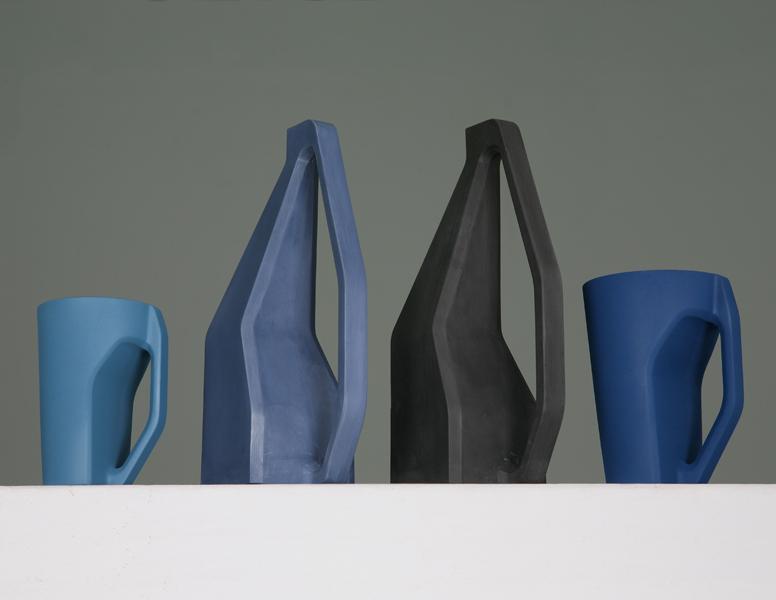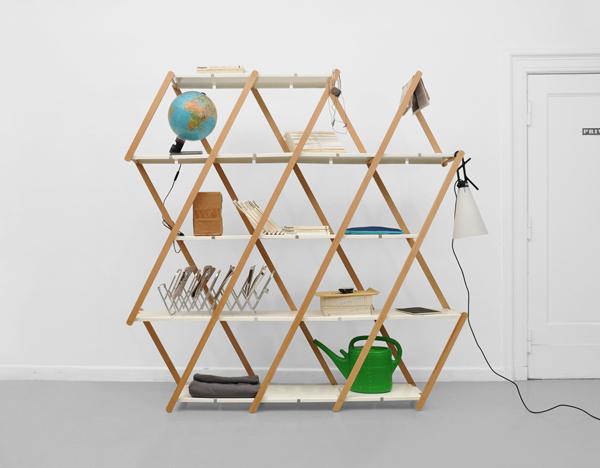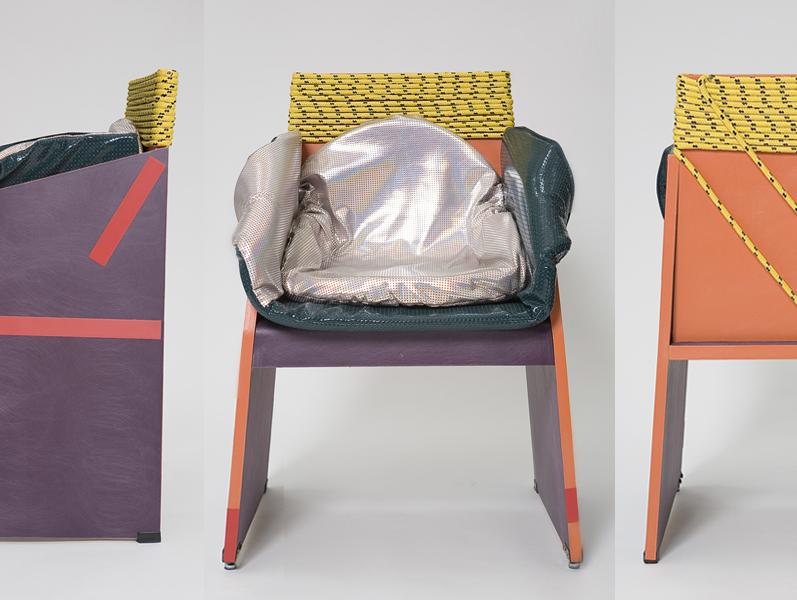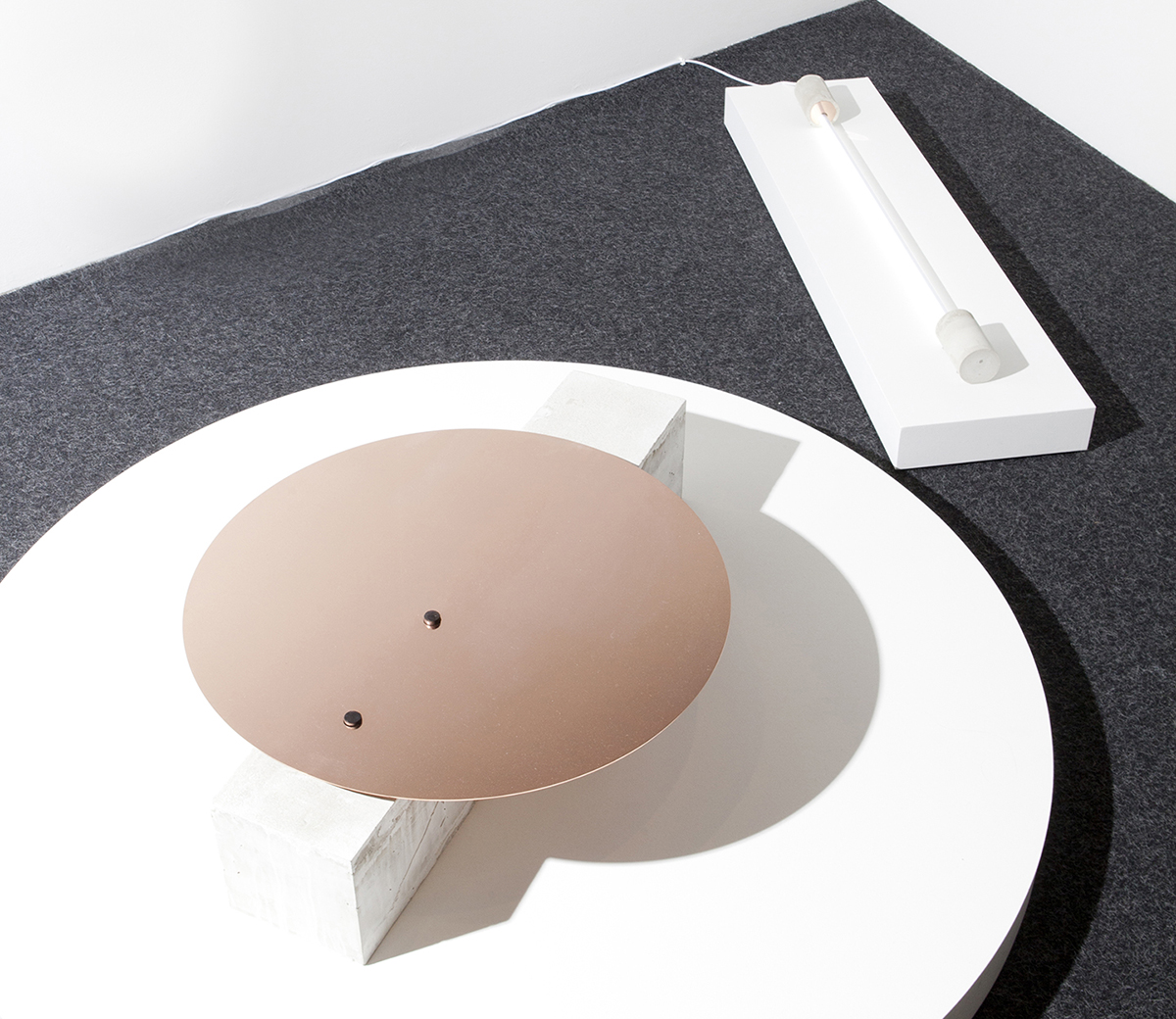
06.04.15
Up and Coming
Aleksandra Pollner, Furniture Designer
After her family bribed their way out of Poland in the ’80s, says Aleksandra Pollner, they spent years moving from place to place to place. Her perpetually uprooted childhood, she says, had a profound effect on her work as an adult: “I became fascinated with boundaries, tensions, spaces in between, where we find solace, and what makes us feel comfort and discomfort,” concepts that inspired pieces like her new Line and Circle table and Ma floor light, pictured above. A sense of restlessness also carried over into her professional trajectory — she went to college at the University of Washington and “was in almost every department,” graduated with degrees in literary theory and psychology, and spent years producing commercial advertising shoots before finding her way to design.
Even then, she started as a graphics grad, branched out into ceramics, spent a few years working almost exclusively in porcelain in Seattle, and only recently decided to attend Cranbrook, where she scaled up to the furniture collection she recently debuted at Sight Unseen OFFSITE. “Everything I had felt comfortable with, and known, I lost,” she says of her current studies. “My body of work and conversation has been completely altered because of that experience.” The new conversation revolves around materials and mindfulness, and finds its primary influence in architecture, from the phenomenological approaches of Juhani Pallasmaa and Peter Zumthor to the way that Luis Barragán and Carlo Scarpa “create magical and dream-like spaces that transform our reality,” says Pollner. She tells us more about her approach below.
(Top image and second image below by Charlie Schuck)
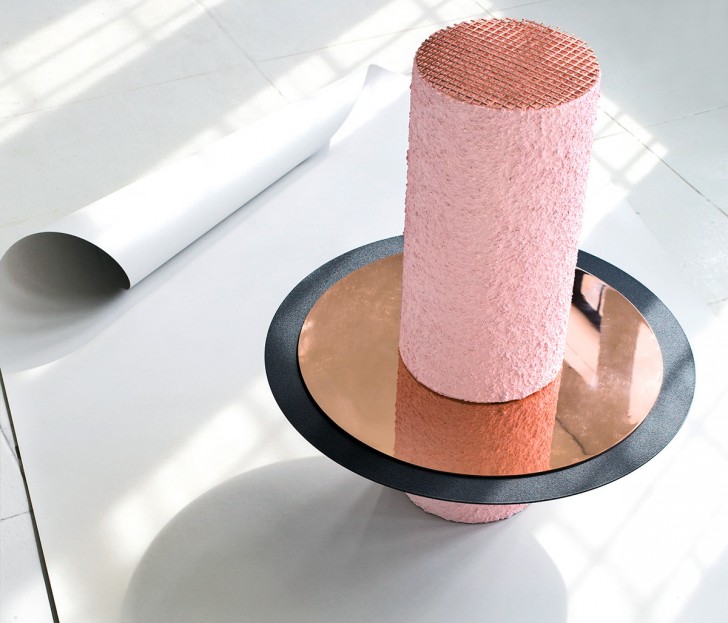
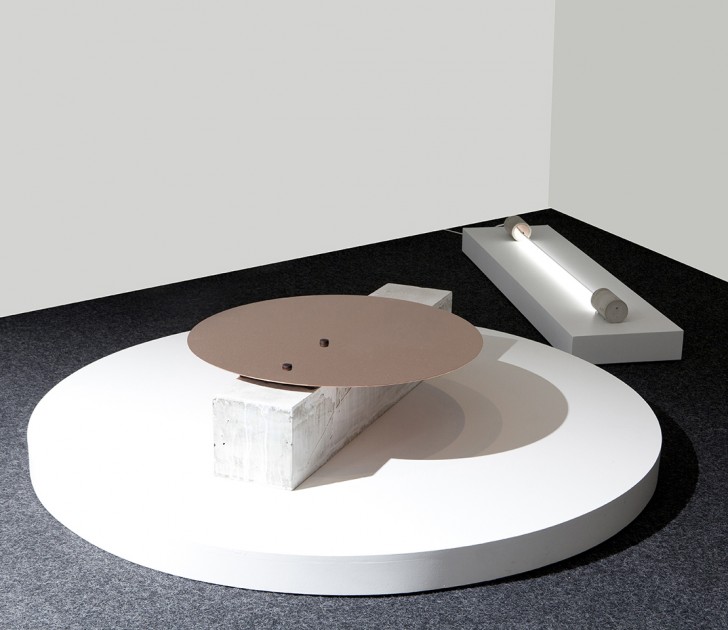
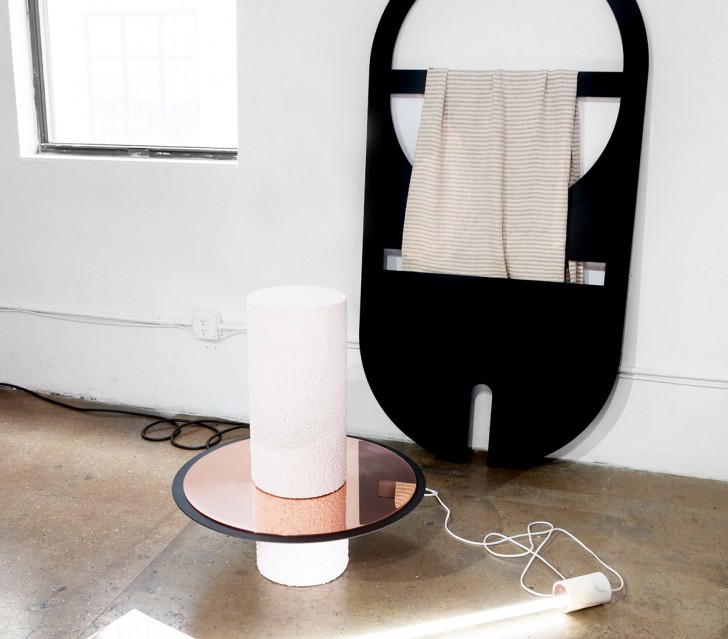 Describe your most recent project and how it was made.
Describe your most recent project and how it was made.
My new body of work stemmed from a meditation on the relationship between a line and a circle, and their points of intersection — what happens in those intersections and what conversations are created. I used and have been using reflective surfaces because they allow for reflection and meditation on the world around us and on ourselves. Also, the beauty of materials such as copper and brass is that they age with us (unless we make an extensive effort to polish them). Because there’s lightness to those materials, I wanted to use a material that would ground them as well as contribute to a dialogue, either in a complementary way or through tensions. For the cylindrical tube table (pictured below), for example, I applied a colored textural surface to the concrete tube, both to complement and highlight the polished surface of the table and for the tubes to be the singular grounding element that are required for the tables to function. The tubes have aerated concrete inside to make them lighter and add mobility.
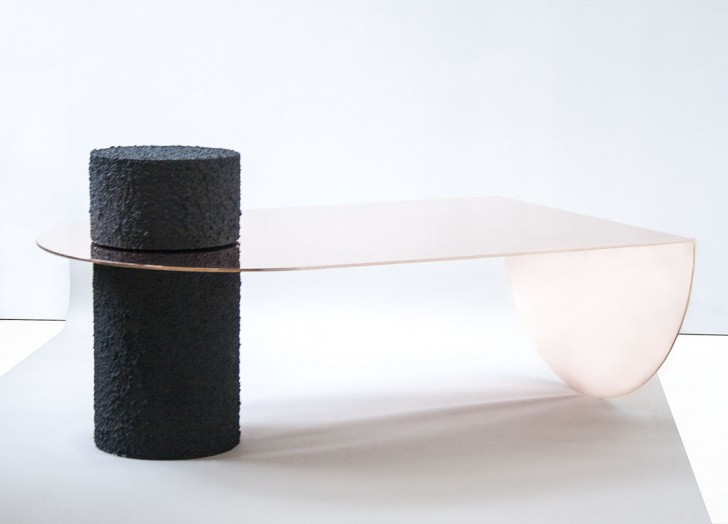
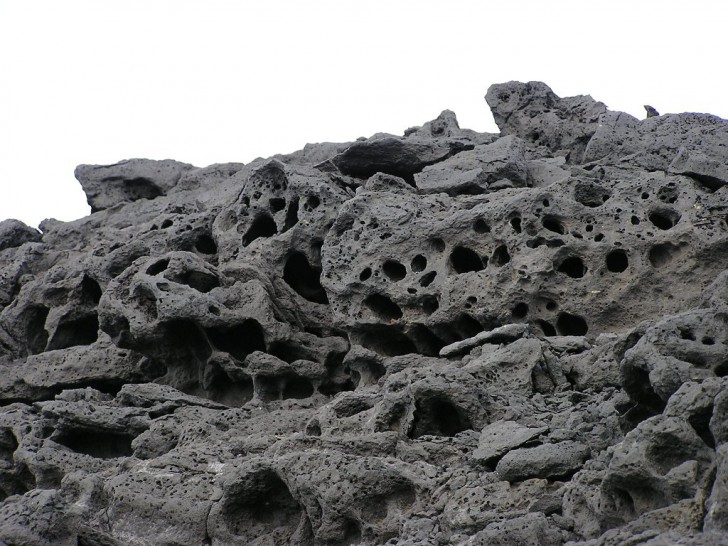 Describe your next project and how you’re currently making it.
Describe your next project and how you’re currently making it.
I’m actually working on a couple reiterations of the current series before moving forward to a whole new idea and project. A lot of my pieces go through various changes in materials because I learn something new from each piece. A change in material creates a new dialogue and usually puts me on a new path. Last week I was in Mexico City where I absolutely fell in love with, crazed over, volcanic rock, which is used mostly as a building material, and its vesicular texture. I was fortunate on the trip to be welcomed into the dynamic, vibrant studio practice of Hector Esrawe, who kindly put me in contact with a local artisan who works with volcanic rock. The discovery of a material that I have not yet worked with all of the sudden opens up new possibilities for me for what that material might want to be. Just as Louis Kahn asked brick what it wanted to be, I ask the same question of my materials in order to highlight and complement them.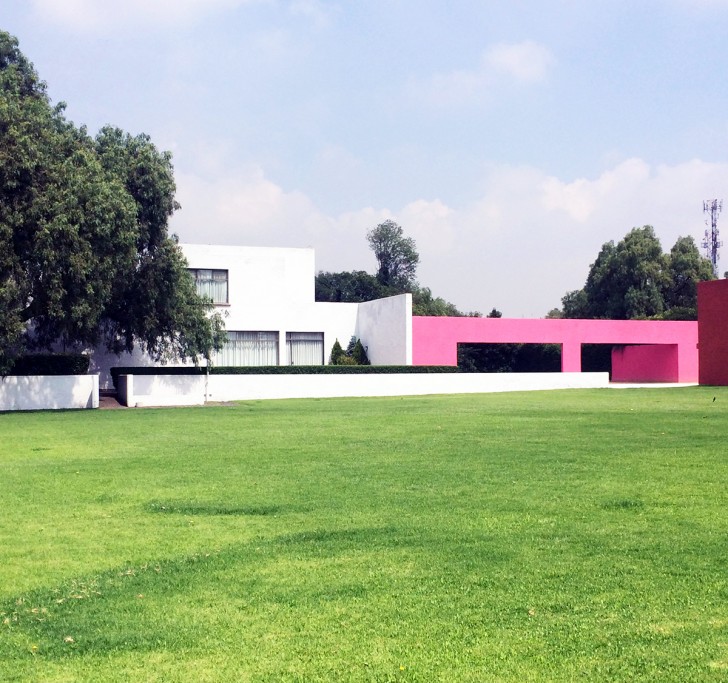
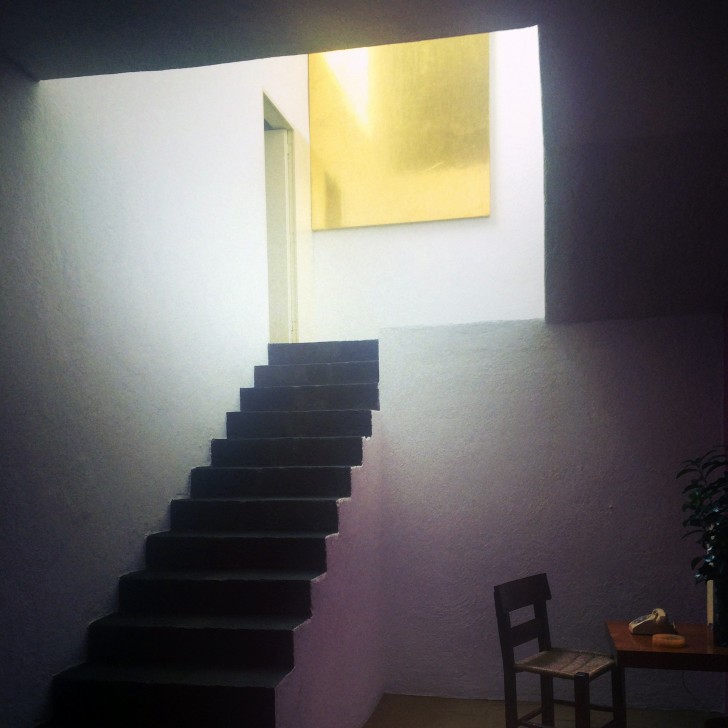 Tell us one thing that’s been inspiring you lately and why.
Tell us one thing that’s been inspiring you lately and why.
I came to Mexico City right after New York design week in order to see and visit Luis Barragán’s work, as he’s one of my biggest inspirations. I love being inspired through travel and my experiences outside of what’s familiar — I love that de-contextualization. It’s incredible to walk around a space or a city with fresh eyes and see how a culture has addressed architecture, materials, and flavors. Your senses are heightened and that de-centering of expectations brings forth new ideas.
I read an interview with Tado Ando recently — who had also recently visited Barragán’s Caudra San Christobál Stables (above top) — and he said that walking through Louis Kahn’s Salk Institute was like walking through Kahn’s prayer. How incredible to be able to feel that from a space. Barragán’s studio (above bottom) creates the same feeling of walking meditation. His use of light, shadow, colors, textures, and reflections creates moments of meditation. I can only hope to have brought those same aspects to my work — it’s something I aspire to. In all of my work there’s always a point of reflection and meditation either in form, in materials, or in the combining of materials and textures. Particularly in my concrete tube tables, what’s most successful is the reflection of the beautiful textured surface in the polished copper and the complimentary tension they create.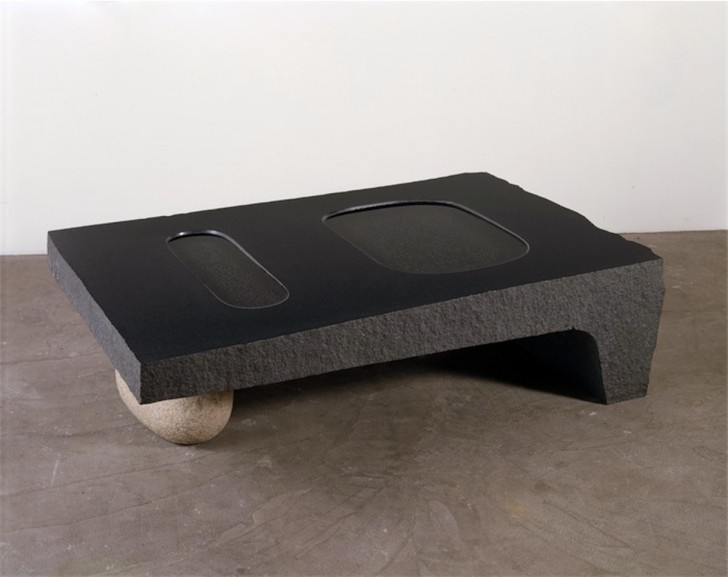 Name your favorite piece of design from the last 10 years, and tell us why you like it.
Name your favorite piece of design from the last 10 years, and tell us why you like it.
It’s not from the last 10 years, but Noguchi’s 1968 Water Table (pictured, courtesy of The Isamu Noguchi Foundation and Garden Museum). Noguchi is one of my most influential artists, as his work walks a beautiful line between sculpture and design, and many of his pieces have a point of silence to them. I immediately think of the Water Table as something that gently implies a function while absolutely being a sculptural piece. And I love that beautiful pink granite boulder gently supporting the massive black granite top! Without that boulder, the function would be stripped away, and having something as simple as a boulder be the part which applies function is a magnificent thing of beauty. I wish that table was in my life and around me at all times. I seek all of those same elements in my work.
